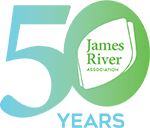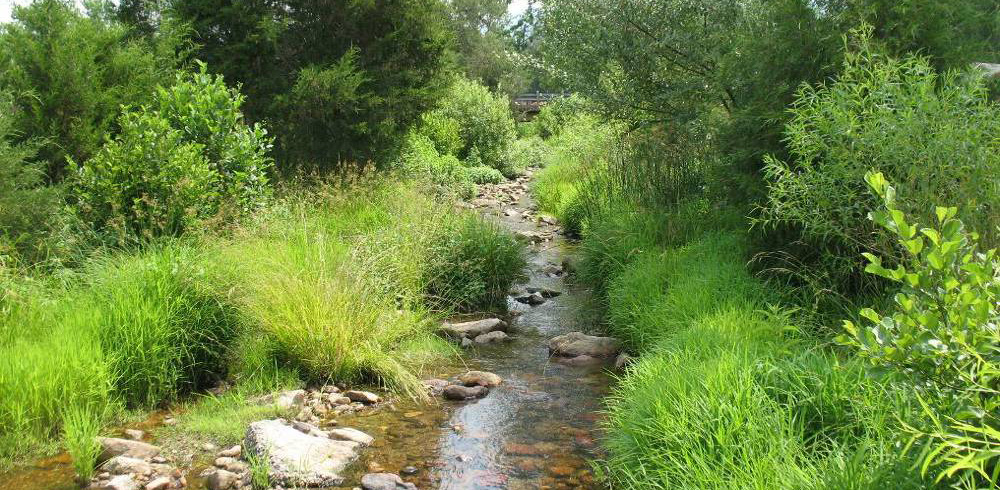Did you know there are different riparian buffer ‘types’? Through our James River Buffer Program, we can help design, install and maintain (for three years!) a forested buffer on your property – at no cost to you! There are six main types of buffer plantings we provide:
Hardwood
 This may be the most common type of forested buffer. It often includes species such as silver maple, red maple, and sycamore, but can also include river birch, black gum, bald cypress or willow. Shrubs can also be included.
This may be the most common type of forested buffer. It often includes species such as silver maple, red maple, and sycamore, but can also include river birch, black gum, bald cypress or willow. Shrubs can also be included.
Pine
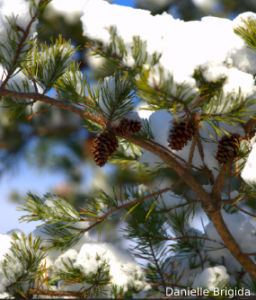 Pine seedlings establish quickly. Since they are less palatable to pests such as voles and deer than hardwood seedlings, they do not require protective tree guards.
Pine seedlings establish quickly. Since they are less palatable to pests such as voles and deer than hardwood seedlings, they do not require protective tree guards.
Pollinator Friendly
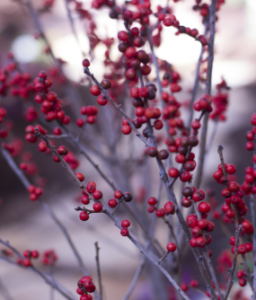 Trees that are great for pollinators include black locust, red bud, black gum and most of the fruit-bearing trees. Shrubs include button bush, serviceberry, and winterberry.
Trees that are great for pollinators include black locust, red bud, black gum and most of the fruit-bearing trees. Shrubs include button bush, serviceberry, and winterberry.
Food Producing
 Buffers can feed your local wildlife or even produce food for you. Nut bearing trees include swamp white oak, walnut, and American hazelnut. Fruit bearers include American persimmon, paw paw, apple, red mulberry, black cherry, plum, elderberry, and serviceberry.
Buffers can feed your local wildlife or even produce food for you. Nut bearing trees include swamp white oak, walnut, and American hazelnut. Fruit bearers include American persimmon, paw paw, apple, red mulberry, black cherry, plum, elderberry, and serviceberry.
Natural Regeneration
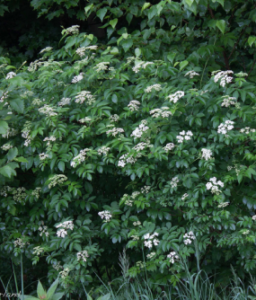 Natural succession is the process by which an empty field will eventually turn into a forest. This method is appropriate for locations with a tree seed source, low invasive species impacts, and when you have the patience to let nature take its course. The advantage of natural regeneration is that the trees will be exactly adapted to the site.
Natural succession is the process by which an empty field will eventually turn into a forest. This method is appropriate for locations with a tree seed source, low invasive species impacts, and when you have the patience to let nature take its course. The advantage of natural regeneration is that the trees will be exactly adapted to the site.
Scenic
 You can preserve a cherished view by planting redbud, serviceberry, and other small or understory trees that reach a mature height of less than 30’. Shrubs that work well in buffers include silky dogwood, meadowsweet and black haw viburnum.
You can preserve a cherished view by planting redbud, serviceberry, and other small or understory trees that reach a mature height of less than 30’. Shrubs that work well in buffers include silky dogwood, meadowsweet and black haw viburnum.
If you have a stream or creek on or adjacent to your property, you may be eligible to participate in our James River Buffer Program! Visit JamesRiverBuffers.org for program details and how to apply.
